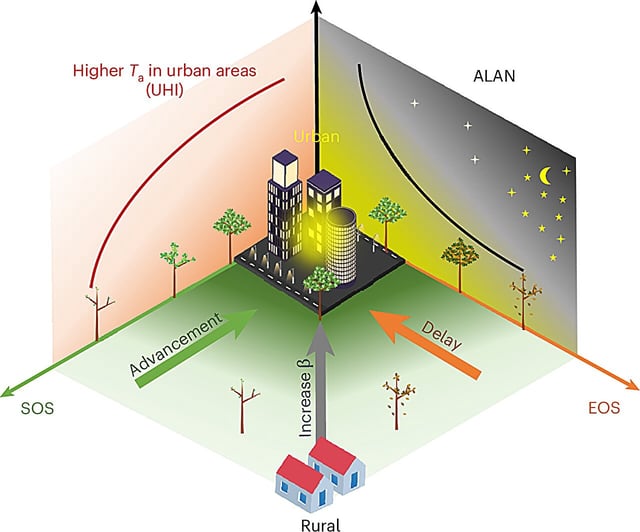Overview
- Satellite analysis of 428 Northern Hemisphere cities from 2014 to 2020 shows urban areas green an average of 12.6 days earlier and delay autumn leaf senescence by 11.2 days compared with surrounding rural zones.
- Researchers found that artificial light at night influences plant photoperiodism more than temperature in four of seven major climate regions, with the strongest effect observed at the end of the growing season.
- Continental variations reveal spring starts earliest under ALAN in European cities, follows in Asia and then North America, where overall night-time brightness is highest.
- Scientists warn that the widespread switch to blue-rich LED streetlights could amplify ALAN’s impact on plant cycles and complicate urban carbon sequestration models.
- Study authors urge interdisciplinary collaboration to integrate ecological findings into urban lighting design and sustainability policies to mitigate ALAN’s ecosystem disruptions.

